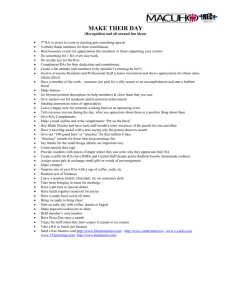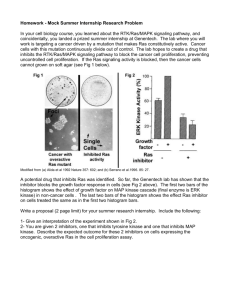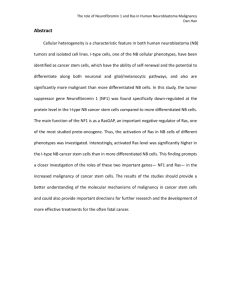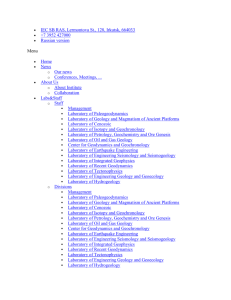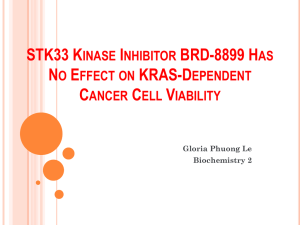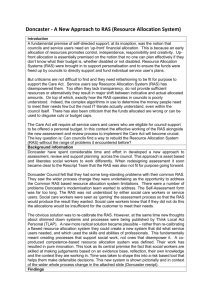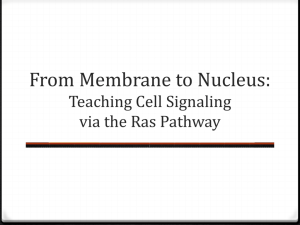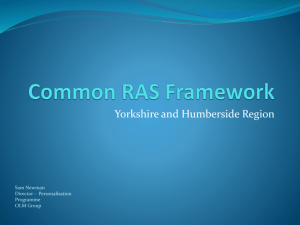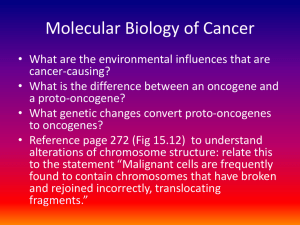Ras is the key regulator of cell growth in all eukaryotic cells
advertisement
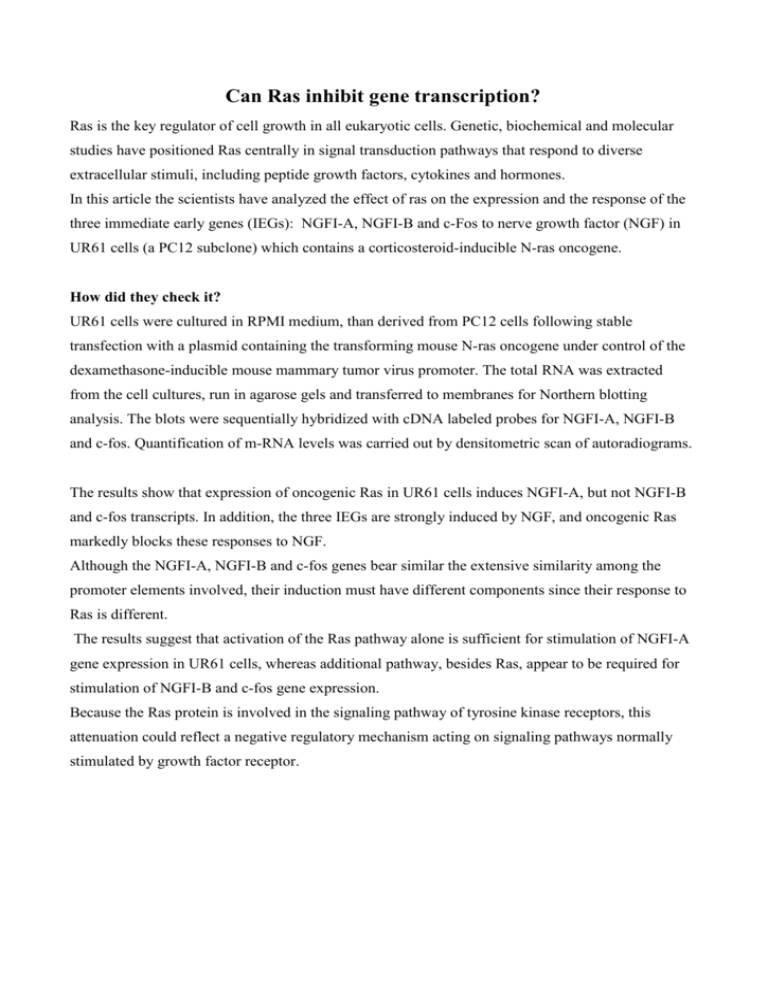
Can Ras inhibit gene transcription? Ras is the key regulator of cell growth in all eukaryotic cells. Genetic, biochemical and molecular studies have positioned Ras centrally in signal transduction pathways that respond to diverse extracellular stimuli, including peptide growth factors, cytokines and hormones. In this article the scientists have analyzed the effect of ras on the expression and the response of the three immediate early genes (IEGs): NGFI-A, NGFI-B and c-Fos to nerve growth factor (NGF) in UR61 cells (a PC12 subclone) which contains a corticosteroid-inducible N-ras oncogene. How did they check it? UR61 cells were cultured in RPMI medium, than derived from PC12 cells following stable transfection with a plasmid containing the transforming mouse N-ras oncogene under control of the dexamethasone-inducible mouse mammary tumor virus promoter. The total RNA was extracted from the cell cultures, run in agarose gels and transferred to membranes for Northern blotting analysis. The blots were sequentially hybridized with cDNA labeled probes for NGFI-A, NGFI-B and c-fos. Quantification of m-RNA levels was carried out by densitometric scan of autoradiograms. The results show that expression of oncogenic Ras in UR61 cells induces NGFI-A, but not NGFI-B and c-fos transcripts. In addition, the three IEGs are strongly induced by NGF, and oncogenic Ras markedly blocks these responses to NGF. Although the NGFI-A, NGFI-B and c-fos genes bear similar the extensive similarity among the promoter elements involved, their induction must have different components since their response to Ras is different. The results suggest that activation of the Ras pathway alone is sufficient for stimulation of NGFI-A gene expression in UR61 cells, whereas additional pathway, besides Ras, appear to be required for stimulation of NGFI-B and c-fos gene expression. Because the Ras protein is involved in the signaling pathway of tyrosine kinase receptors, this attenuation could reflect a negative regulatory mechanism acting on signaling pathways normally stimulated by growth factor receptor.
